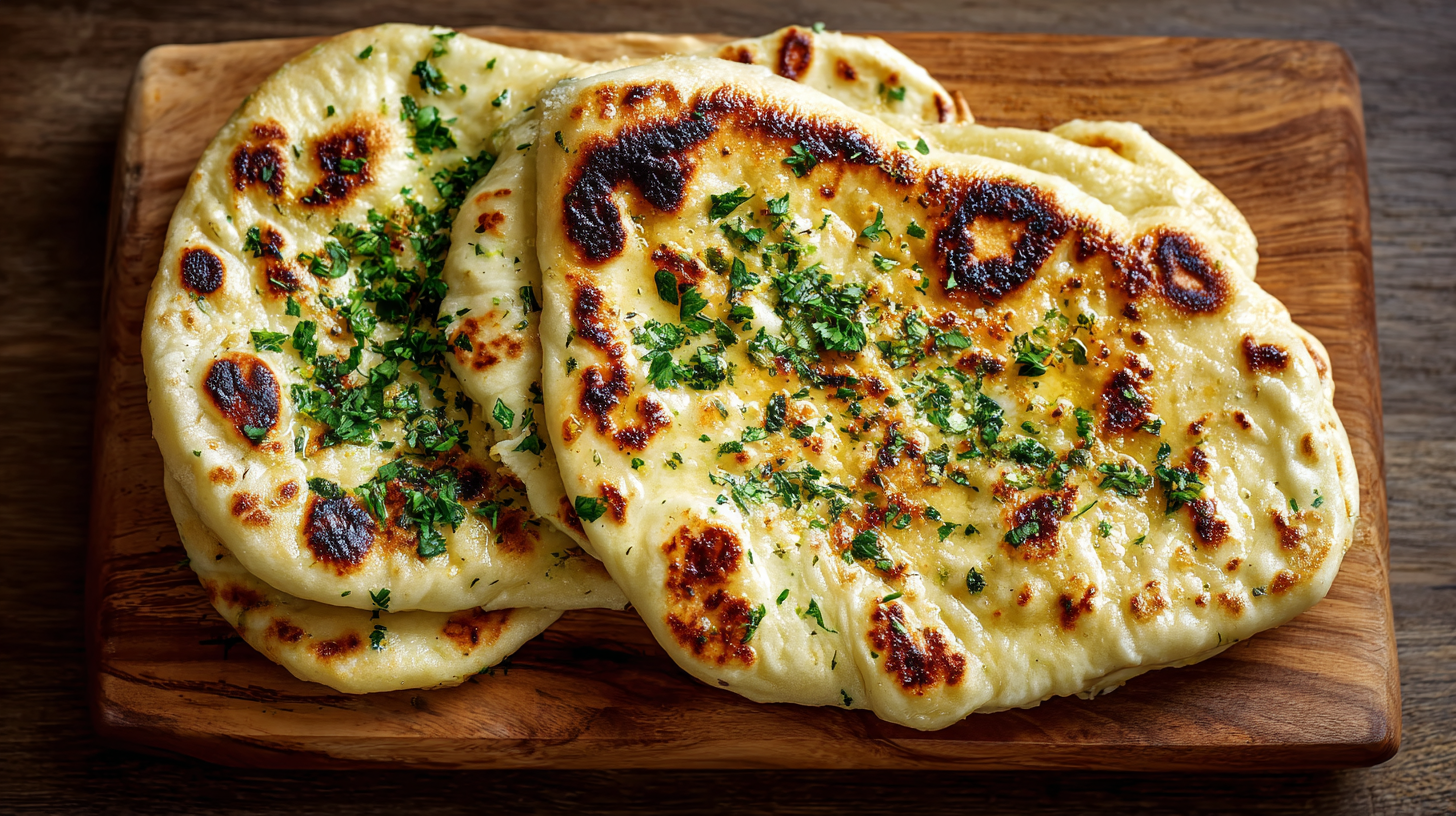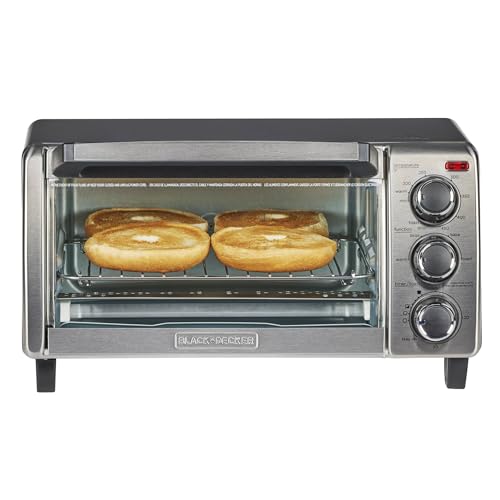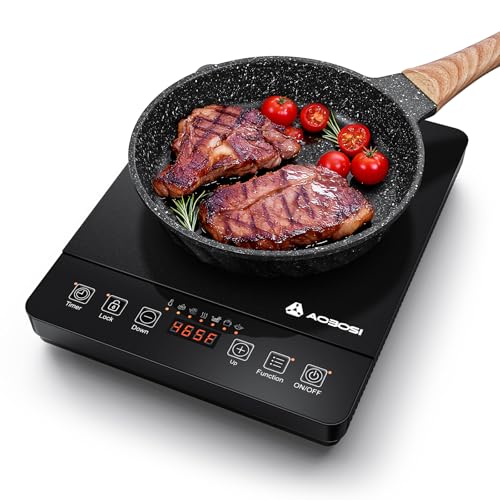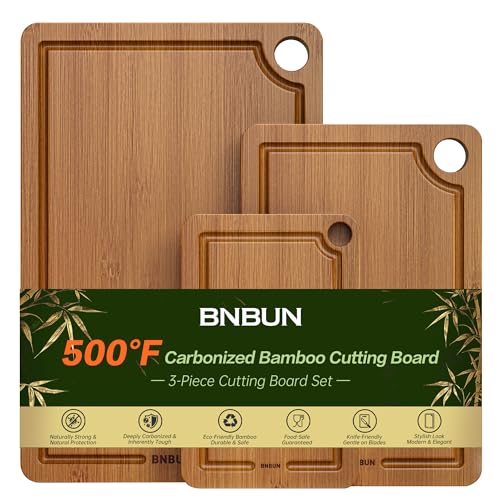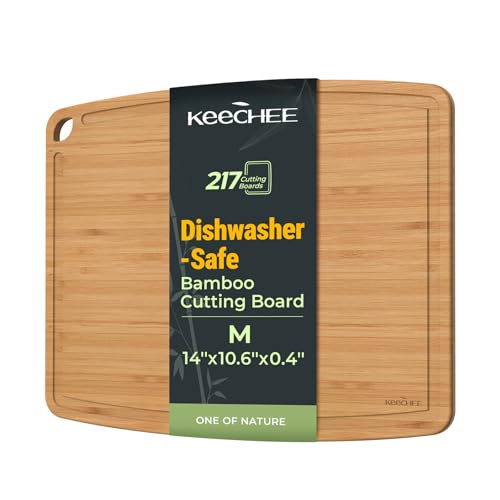Ingredients
Creating authentic naan requires just a handful of pantry staples that work together to produce that signature soft texture and rich flavor. These carefully measured ingredients will yield eight restaurant-quality naan breads perfect for any meal.
For the Naan Dough
- 3 cups all-purpose flour, plus extra for dusting
- 1 teaspoon active dry yeast
- 1 teaspoon sugar
- 3/4 cup warm water (110°F)
- 1/2 cup plain Greek yogurt, room temperature
- 2 tablespoons vegetable oil
- 1 teaspoon salt
- 1/2 teaspoon baking powder
- 1 large egg, beaten
For the Garlic Butter Topping
- 4 tablespoons unsalted butter, melted
- 3 cloves garlic, minced
- 2 tablespoons fresh cilantro, finely chopped
- 1/4 teaspoon salt
- Optional: 1 tablespoon grated Parmesan cheese
Equipment Needed
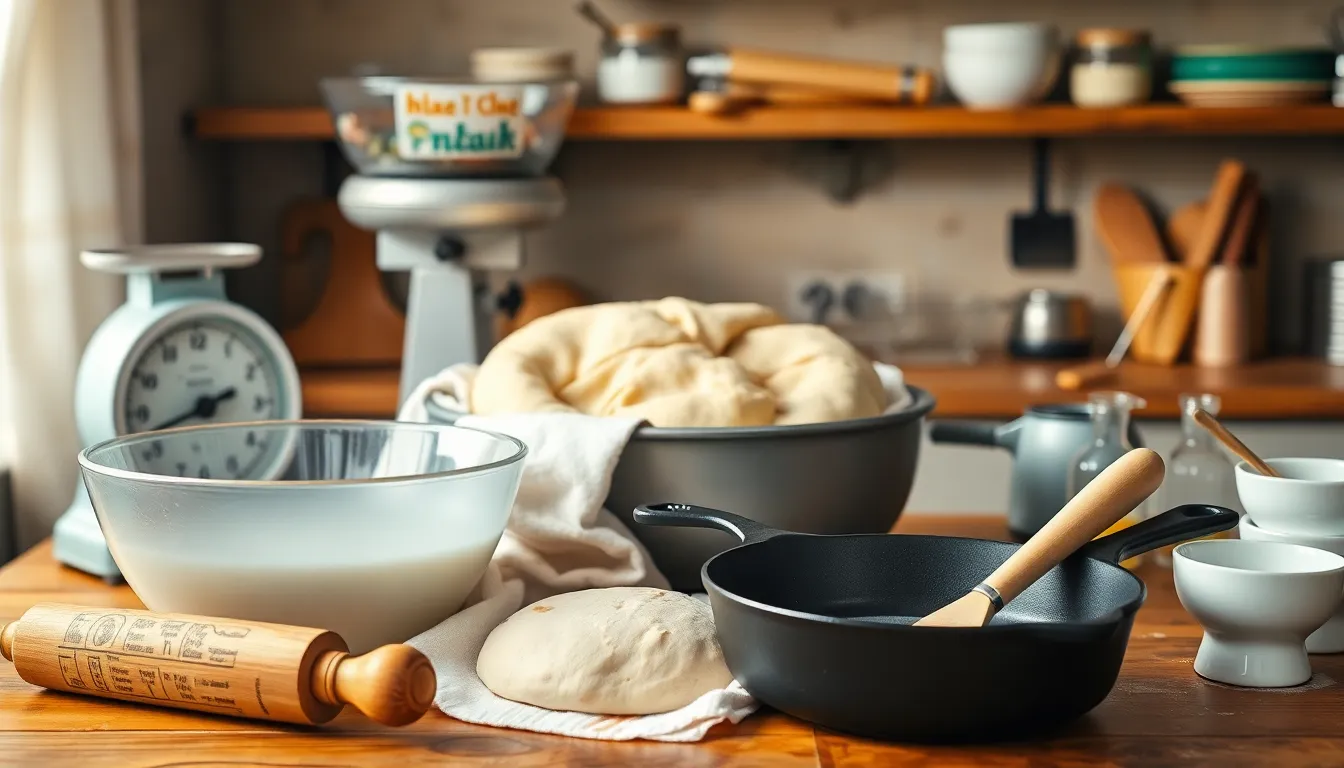
Making restaurant-quality naan at home requires exact tools that ensure proper texture and authentic results. Your kitchen likely contains most of these essential items already.
Large mixing bowl serves as your primary workspace for combining ingredients and developing the dough. Choose a bowl with enough capacity to accommodate the dough as it doubles in size during rising.
Kitchen scale provides accuracy when measuring flour and other dry ingredients. Professional bakers rely on weight measurements rather than volume for consistent results every time.
Clean kitchen towel covers the dough during rising periods and prevents a skin from forming on the surface. Damp towels work best for maintaining moisture levels throughout the proofing process.
Rolling pin shapes each portion of dough into the characteristic oval or teardrop form. A marble or wooden rolling pin distributes pressure evenly across the dough surface.
Cast iron skillet or heavy-bottomed pan mimics the intense heat of traditional tandoor ovens. The thick base retains and distributes heat uniformly for proper cooking and charring.
Pastry brush applies the garlic butter mixture evenly across the finished naan surface. Silicone brushes work particularly well as they distribute toppings without tearing the delicate bread.
Oven set to maximum temperature creates the high-heat environment necessary for authentic naan texture. Most home ovens reach 500°F which produces excellent results when combined with proper technique.
Measuring cups and spoons ensure accurate proportions of liquids and seasonings. Precise measurements maintain the delicate balance between ingredients that creates the perfect dough consistency.
Instructions
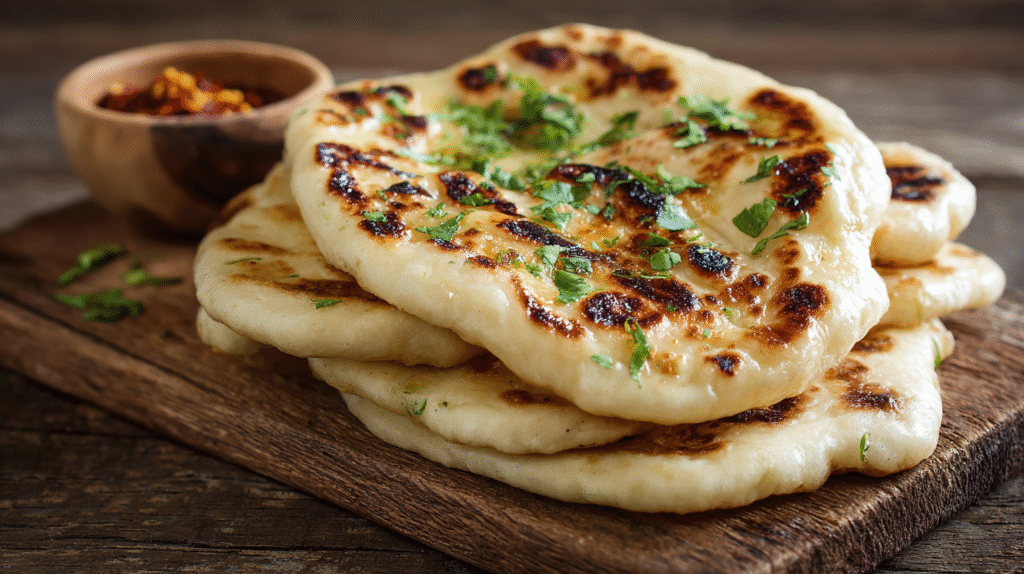
These step-by-step instructions will guide you through creating authentic restaurant-style naan that rivals your favorite Indian restaurant. Follow each stage carefully to achieve the perfect texture and flavor.
Prep the Dough
Dissolve your active dry yeast in warm water (around 110°F) and let it sit for 5 minutes until foamy. This activates the yeast and ensures your naan will have the proper rise.
Combine all-purpose flour, salt, and baking powder in your large mixing bowl. Create a well in the center of the dry ingredients and add the activated yeast mixture, Greek yogurt, vegetable oil, and beaten egg.
Mix the ingredients with a wooden spoon until a shaggy dough forms. Turn the dough onto a lightly floured surface and knead for 8-10 minutes until smooth and elastic. The dough should feel slightly sticky but not wet.
Place the kneaded dough in an oiled bowl and turn it to coat all sides with oil. This prevents the surface from drying out during the rising process.
Let the Dough Rise
Cover your bowl with a clean kitchen towel and place it in a warm, draft-free location. Allow the dough to rise for 1-2 hours until it doubles in size.
Test the dough by gently pressing two fingers into the surface. The dough is ready when the indentations remain without springing back immediately.
Punch down the risen dough to release excess air bubbles. Divide it into 8 equal portions using a kitchen scale for consistent results.
Shape the Naan
Roll each portion into a ball and let them rest on a floured surface for 10 minutes. This relaxes the gluten and makes rolling easier.
Use your rolling pin to flatten each ball into an oval shape approximately 6-8 inches long and 4-5 inches wide. Keep the thickness around 1/4 inch for optimal cooking.
Place shaped naan on parchment paper or a floured baking sheet while you prepare the remaining pieces. Cover with a damp towel to prevent drying.
Cook the Naan
Preheat your oven to its maximum temperature (typically 500-550°F) with a cast iron skillet or heavy-bottomed pan inside. This creates the intense heat needed for authentic naan.
Carefully remove the hot skillet and place it on your stovetop over high heat. Lay one naan in the pan and cook for 1-2 minutes until bubbles form and the bottom develops golden brown spots.
Flip the naan and cook the second side for another 1-2 minutes. The finished naan should have characteristic charred spots and a soft, pillowy texture.
Transfer cooked naan to a clean kitchen towel and cover to keep warm while cooking the remaining pieces.
Apply the Garlic Butter
Brush each warm naan generously with the prepared garlic butter mixture using your pastry brush. The heat from the naan will melt the butter and help the garlic penetrate the surface.
Sprinkle fresh cilantro and optional Parmesan cheese over the buttered surface while the naan is still warm. Serve immediately for the best texture and flavor experience.
Directions for Different Cooking Methods
You can achieve delicious homemade naan using three different cooking methods. Each technique produces authentic results with the right approach and temperature control.
Stovetop Method
Heat your cast iron skillet or heavy-bottomed pan over medium-high heat for 5 minutes. Roll each dough portion into an oval shape approximately 8 inches long and 4 inches wide. Place the rolled naan onto the hot skillet and cook for 1-2 minutes until bubbles form on the surface and the bottom develops golden brown spots.
Flip the naan using tongs and cook the second side for 60-90 seconds until charred spots appear. Press gently with a spatula to ensure even contact with the pan surface. Remove from heat and immediately brush with garlic butter mixture while still warm.
Stack cooked naan on a plate and cover with a clean kitchen towel to maintain softness. The stovetop method provides excellent control over browning and creates the characteristic spotted appearance of traditional naan.
Oven Method
Preheat your oven to its maximum temperature setting (usually 500-550°F) and place a pizza stone or inverted baking sheet on the middle rack for 30 minutes. Roll the dough portions into oval shapes and place them directly onto the preheated stone or baking sheet using a pizza peel or the back of another baking sheet.
Bake for 2-3 minutes until the naan puffs up and develops golden spots on the surface. Watch carefully as the high heat cooks the bread quickly. Remove using a spatula or pizza peel and brush immediately with the garlic butter mixture.
Turn on your oven’s broiler for the last 30-60 seconds if you want additional charring on the surface. The oven method works well for cooking multiple naan simultaneously and produces consistent results.
Grill Method
Preheat your gas or charcoal grill to high heat with the lid closed. Clean the grates thoroughly and oil them lightly to prevent sticking. Roll each dough portion into the desired oval shape and brush one side lightly with oil.
Place the oiled side down on the hot grill grates and cook for 1-2 minutes until grill marks appear and the bottom firms up. Brush the top surface with oil before flipping to prevent sticking. Flip carefully and grill the second side for 60-90 seconds until charred spots develop.
Remove from the grill and brush immediately with garlic butter while the naan is hot. The grill method creates exceptional smoky flavor and authentic charred texture that closely mimics tandoor cooking. Keep the grill lid open during cooking to monitor progress and prevent burning.
Make-Ahead Instructions
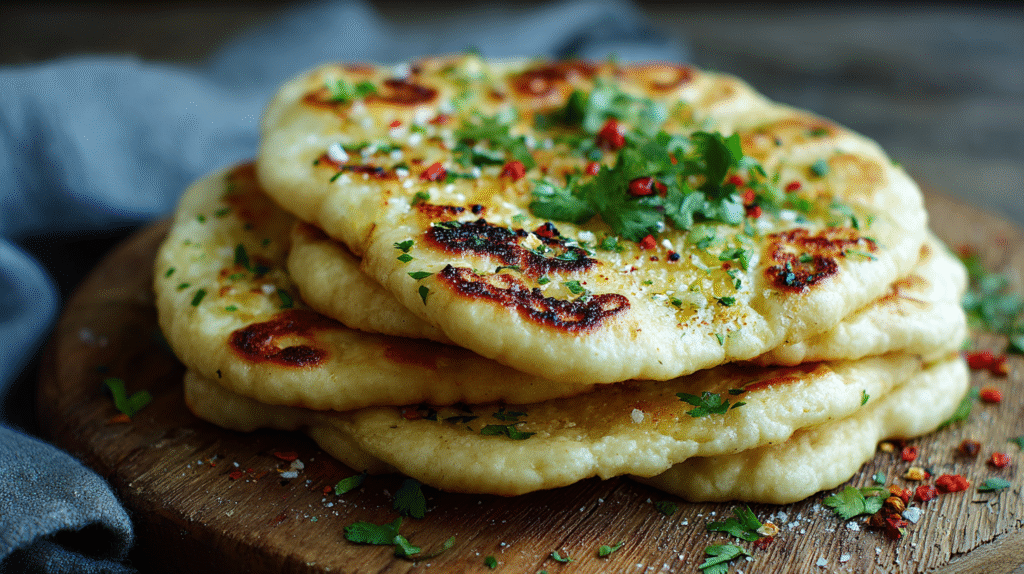
Prepare Dough in Advance
You can prepare naan dough up to 24 hours before serving. Mix the dough according to the recipe instructions and complete the first rise. Punch down the risen dough and divide it into 8 portions. Place the portioned dough balls on a lightly floured baking sheet and cover tightly with plastic wrap. Refrigerate the covered dough portions for up to one day.
Storage and Rising Guidelines
| Timing | Storage Method | Duration | Notes |
|---|---|---|---|
| Same Day | Room temperature covered | 2-4 hours | Best for immediate use |
| Next Day | Refrigerated covered | Up to 24 hours | Requires additional rising time |
| Extended Storage | Frozen individually wrapped | Up to 1 month | Thaw overnight before use |
Bring to Room Temperature
Remove the refrigerated dough from the fridge 30 minutes before cooking. Allow the portions to come to room temperature while covered with a damp kitchen towel. The dough should feel slightly warm to the touch and pliable when ready to roll.
Shape and Cook from Chilled Dough
Roll each room temperature dough portion into the traditional naan shape using your rolling pin. The slightly chilled dough actually holds its shape better during rolling. Cook the shaped naan immediately using your preferred method from the cooking instructions.
Prepare Garlic Butter Topping Ahead
Mix the garlic butter topping ingredients in a small bowl and store covered in the refrigerator for up to 3 days. Bring the mixture to room temperature 15 minutes before serving or gently warm it in the microwave for 10 seconds. The flavors actually improve after resting overnight.
Freeze Cooked Naan
Completely cooled cooked naan freezes exceptionally well for up to 3 months. Wrap each naan individually in plastic wrap and place in a freezer bag. Reheat frozen naan directly in a 350°F oven for 3-4 minutes or in a skillet over medium heat for 1 minute per side.
Storage and Reheating Tips
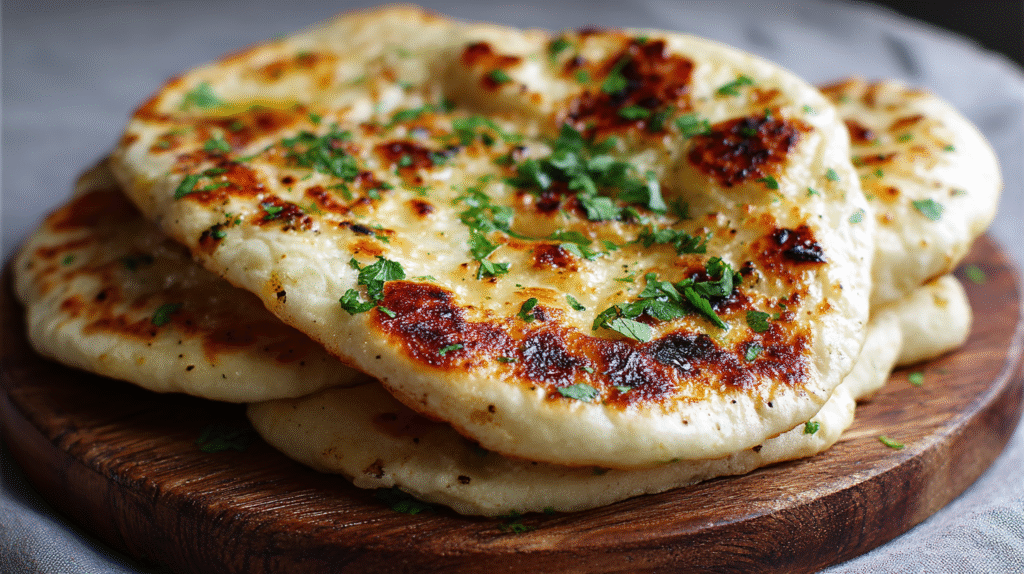
Fresh naan tastes best when eaten immediately after cooking, but you can store leftover naan for several days with proper techniques. Room temperature storage works for naan you plan to consume within 24 hours – simply wrap the flatbreads in a clean kitchen towel or place them in an airtight container.
Refrigerated naan stays fresh for up to one week when stored correctly. Wrap each piece individually in plastic wrap or aluminum foil to prevent moisture loss. You can also layer naan between parchment paper in an airtight container to maintain softness.
Freezing extends naan’s shelf life up to three months. Cool the naan completely before wrapping each piece tightly in plastic wrap, then place wrapped naan in freezer bags. Label bags with the date to track storage time.
Reheating Methods
| Method | Temperature | Time | Best For |
|---|---|---|---|
| Oven | 350°F | 2-3 minutes | Multiple pieces |
| Stovetop | Medium heat | 30-60 seconds per side | Individual naan |
| Microwave | High power | 15-30 seconds | Quick reheating |
| Toaster | Medium setting | 1-2 minutes | Crispy texture |
Oven reheating produces the most authentic results. Preheat your oven to 350°F and wrap naan in damp paper towels before heating for 2-3 minutes. This method restores the soft interior while maintaining the slightly crispy exterior.
Stovetop reheating works excellently for individual pieces. Heat a dry skillet over medium heat and warm each naan for 30-60 seconds per side. Brush with melted butter after reheating to enhance flavor and texture.
Microwave reheating offers convenience but requires careful timing. Place naan between damp paper towels and heat for 15-30 seconds. Check frequently to prevent overcooking, which creates tough, chewy texture.
Frozen naan requires thawing before reheating for best results. Transfer frozen naan to the refrigerator overnight, then use any reheating method above. You can also reheat directly from frozen by adding 30-60 seconds to the recommended times.
Steam reheating works particularly well for day-old naan. Place a steamer basket over boiling water and steam wrapped naan for 1-2 minutes. This method restores moisture without making the bread soggy.
Variations and Flavor Options
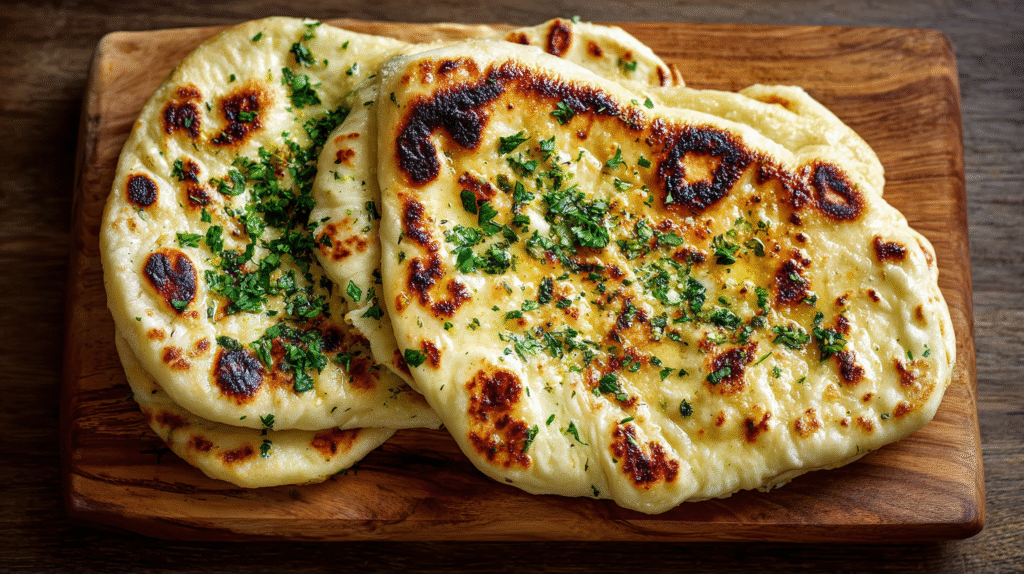
Transform your basic naan into exciting flavor combinations that complement any meal. These variations build upon the foundation recipe while adding unique tastes and textures.
Garlic Naan
Create aromatic garlic naan by incorporating minced garlic directly into your dough. Add 2 tablespoons of finely minced fresh garlic to the flour mixture before combining with wet ingredients. This method distributes garlic flavor throughout the entire bread rather than just on top.
Brush the cooked naan with garlic butter while it’s still hot from the skillet. Mix 4 tablespoons melted butter with 3 cloves minced garlic and 2 tablespoons chopped fresh cilantro. The residual heat will activate the garlic oils and create an irresistible aroma.
Sprinkle coarse sea salt over the garlic butter for added texture and flavor contrast. You can also add a light dusting of garlic powder to intensify the garlic taste without overwhelming the bread’s delicate texture.
Cheese Naan
Stuff your naan with cheese for a rich and indulgent variation. Roll out the dough into circles and place 2 tablespoons of shredded mozzarella or paneer in the center. Fold the edges over the cheese and seal completely to prevent leakage during cooking.
Mix different cheeses for complex flavors. Combine equal parts mozzarella and sharp cheddar with a tablespoon of cream cheese for extra creaminess. Add finely chopped green onions or jalapeños to the cheese mixture for additional flavor layers.
Cook cheese naan on medium heat to allow the cheese to melt without burning the exterior. Press gently with your spatula to ensure even cooking and proper cheese distribution throughout the bread.
Herb Naan
Incorporate fresh herbs directly into your dough for aromatic herb naan. Add 3 tablespoons of finely chopped fresh herbs such as cilantro, mint, or basil to the flour mixture. This creates beautiful green flecks throughout the bread and infuses every bite with herbal flavors.
Create an herb butter topping by combining 4 tablespoons softened butter with 2 tablespoons each of chopped cilantro and mint. Add 1 tablespoon of chopped fresh dill and a pinch of dried oregano for Mediterranean-inspired flavors.
Experiment with herb combinations based on your meal’s cuisine. Use rosemary and thyme for Italian dishes or combine cilantro and mint for Indian flavors. Fresh herbs work best as dried herbs can become bitter when cooked at high temperatures.
Serving Suggestions
Your fresh naan pairs beautifully with an array of Indian dishes and international cuisines. Serve warm naan alongside classic curries like chicken tikka masala or lamb vindaloo to soak up every drop of rich sauce. The bread’s soft texture makes it perfect for scooping dal or chana masala directly from the bowl.
Transform your naan into an appetizer by cutting it into triangles and serving with creamy hummus or spicy chutneys. You can create a Mediterranean-style meal by pairing garlic naan with grilled vegetables and tzatziki sauce. The bread also works wonderfully as a base for personal-sized pizzas topped with tandoori chicken and fresh cilantro.
Use your homemade naan to wrap spiced meats and vegetables for quick handheld meals. Brush the bread with olive oil and sprinkle with za’atar for a Middle Eastern twist that complements roasted lamb or grilled halloumi. Your cheese-stuffed naan becomes an indulgent side dish when served with simple roasted tomatoes and fresh basil.
Create breakfast wraps by filling warm naan with scrambled eggs and sautéed spinach. The bread’s versatility extends to dessert applications where you can brush it with honey and cinnamon for a sweet treat. Serve alongside spiced tea or coffee for an authentic Indian dining experience.
Your herb naan complements grilled fish and roasted chicken particularly well. The fresh herbs in the bread echo the flavors of Mediterranean marinades and spice rubs. You can also use naan as a substitute for pita bread in Greek-inspired meals featuring feta cheese and olives.
Stack multiple naan varieties on a wooden board to create an impressive bread service for dinner parties. Include small bowls of different chutneys and raita for guests to sample various flavor combinations. This presentation allows everyone to customize their bread experience according to their taste preferences.
Conclusion
You now have everything you need to create restaurant-quality naan in your own kitchen. With the right techniques and tools you’ll be turning out soft fluffy bread that rivals your favorite Indian restaurant.
Remember that practice makes perfect – don’t worry if your first batch isn’t exactly what you envisioned. Each time you make naan you’ll get better at handling the dough and achieving that perfect balance of chew and char.
The beauty of homemade naan lies in its versatility and freshness. Whether you’re pairing it with curry experimenting with flavor variations or using it as a base for creative dishes you’ve unlocked a skill that will elevate countless meals to come.

